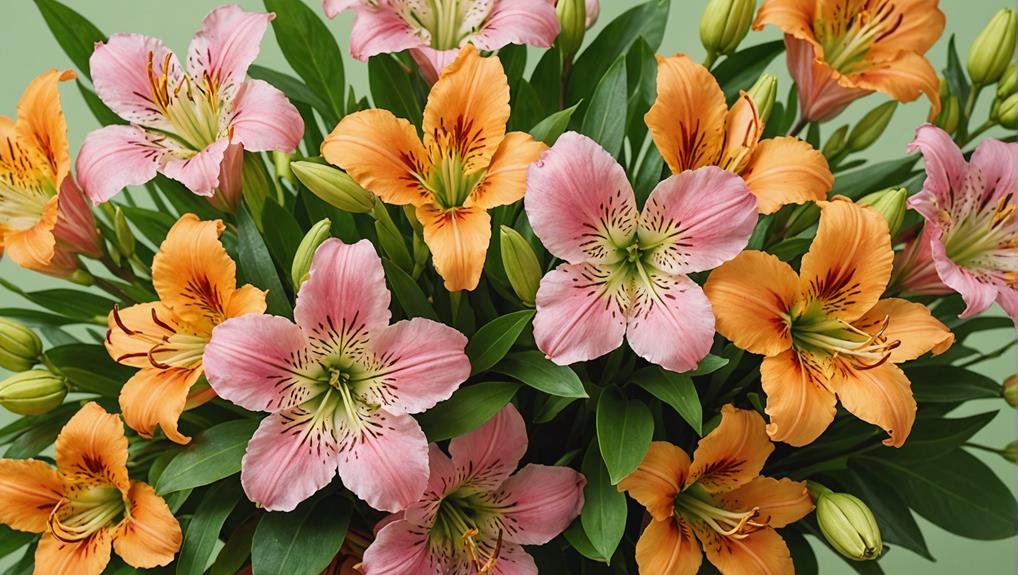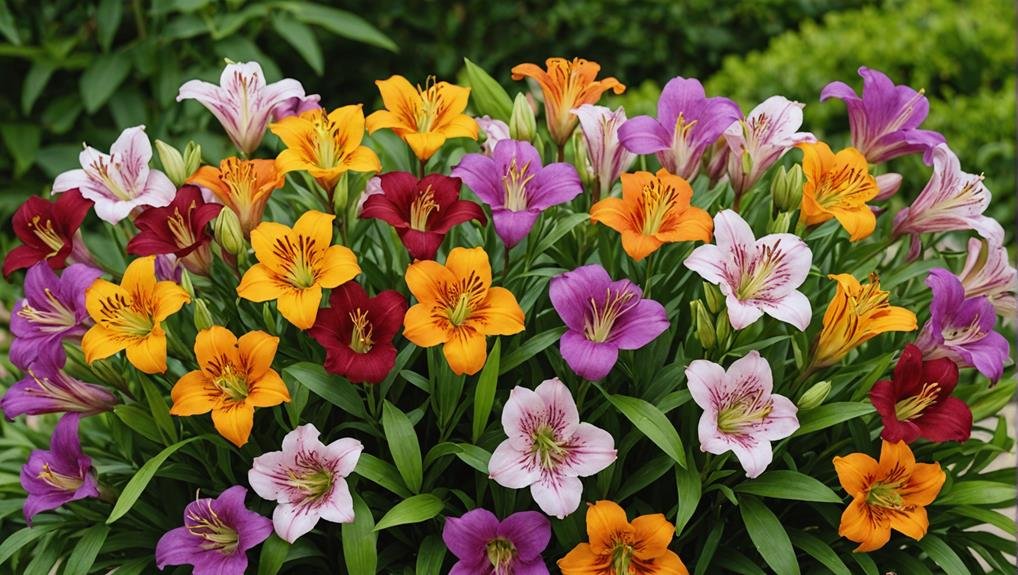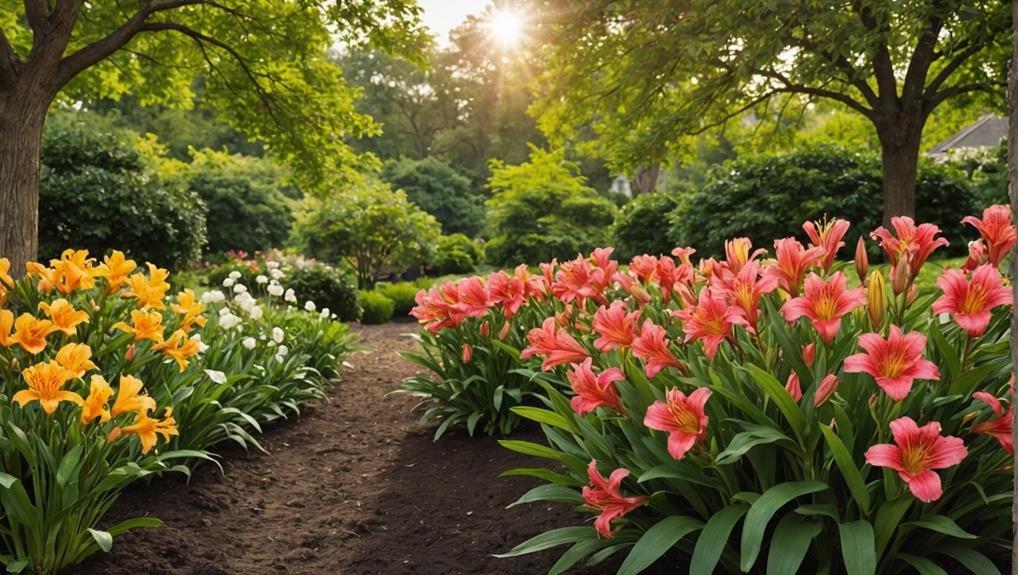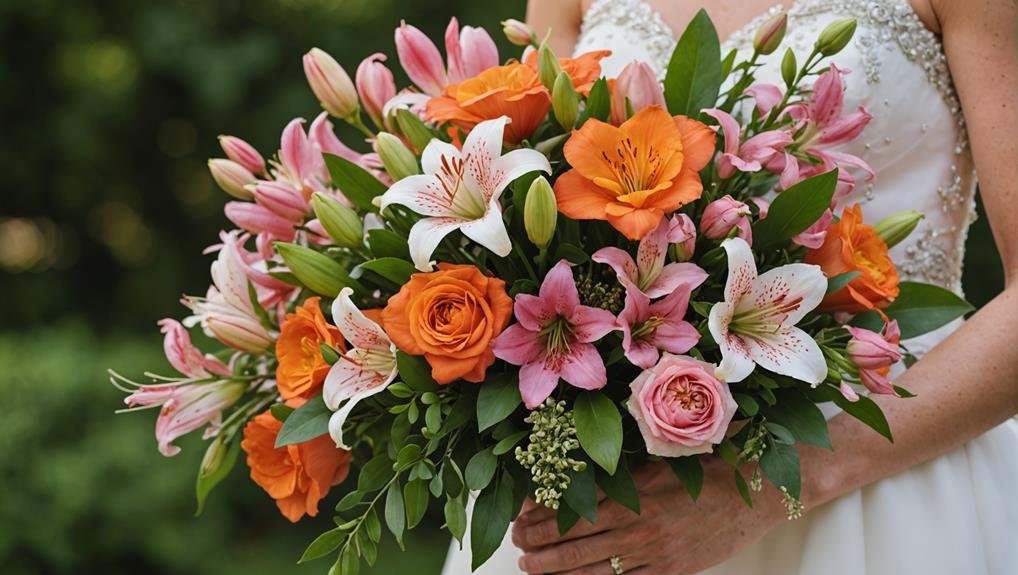When planning the floral arrangements for a wedding, the choice of flowers can have a significant impact on the overall aesthetic and emotional tone. Alstroemeria, commonly known as the Peruvian Lily, stands out as a compelling option due to its intricate petal patterns and a wide range of colors. These versatile blooms, symbolizing devotion and friendship, offer a unique charm that complements traditional wedding flowers like roses and lilies. Understanding the various aspects of Alstroemeria—from its physical characteristics to its cultural significance—can provide valuable insights for creating stunning and meaningful wedding arrangements. Let’s explore the attributes that make Alstroemeria an exceptional choice.
Flower Overview

Alstroemeria, commonly known as the Peruvian Lily or Lily of the Incas, is a vibrant and versatile flower originating from South America. Renowned for its wide range of colors, including white, yellow, orange, pink, red, and purple, Alstroemeria has become a favored choice for weddings and other significant events. Its vivid hues and striking appearance make it an excellent addition to bridal bouquets, centerpieces, and floral arrangements, providing a touch of elegance and sophistication.
The appeal of Alstroemeria in wedding planning is multifaceted. Not only does it offer aesthetic beauty, but it also boasts impressive durability. When selecting fresh Alstroemeria bunches, it is crucial to look for firm stems and vibrant, unblemished blooms to guarantee the highest quality. This attention to detail ensures that the flowers will maintain their allure throughout the wedding festivities.
In Australia, Alstroemeria is commercially grown year-round, guaranteeing its availability regardless of the season. This continuous supply makes it a reliable option for wedding planners and florists, who can rely on these flowers to create stunning displays. With its enduring charm and versatility, Alstroemeria continues to be a top choice for wedding floral arrangements.
Physical Description
Beyond its vibrant colors and enduring appeal, the physical characteristics of the Peruvian Lily play a significant role in its popularity in wedding floral arrangements. Alstroemeria flowers are distinguished by their unique and intricate structure. Typically, each stem boasts multiple blossoms, creating a lush and voluminous display that enhances any floral composition. The petals of the Alstroemeria are often speckled or streaked with contrasting colors, adding depth and visual interest to their already striking appearance.
One of the most fascinating aspects of the Peruvian Lily is its foliage. The leaves exhibit a remarkable feature by growing upside down, owing to a distinctive twist near the base. This unusual characteristic not only adds to the flower’s charm but also contributes to its overall visual intrigue.
Originating from South America, specifically named after the Andes region, these flowers are commercially cultivated in various parts of the world, including Australia. This widespread cultivation guarantees that Alstroemeria flowers are available year-round, making them a dependable choice for weddings and events regardless of the season.
The combination of their intricate petal patterns and unique foliage positions Alstroemeria flowers as a favorite among floral designers and brides alike, offering both beauty and versatility.
Available Colour Varieties

A diverse palette of colors enhances the appeal of Peruvian Lilies, making them an adaptable choice for wedding floral arrangements. Alstroemeria flowers, commonly known as Peruvian Lilies, are available in a stunning array of colors, enabling brides and floral designers to create bespoke wedding bouquets due to their versatility. From soft pastels to vivid tones, these blooms are perfect for any wedding theme or color scheme.
The wide range of hues includes bi-colors, white, cream, yellow, bronze, orange, red, pink, burgundy, mauve, and purple. This extensive variety allows for endless combinations, ensuring that every floral arrangement can be tailored to the couple’s unique vision. Whether aiming for a subtle and elegant look or a bold and dynamic display, there is an alstroemeria color variety to suit every need.
Here is a breakdown of the available color varieties:
| Color | Description |
|---|---|
| White | Pure and classic, ideal for traditional wedding bouquets. |
| Yellow | Bright and cheerful, perfect for sunny, outdoor weddings. |
| Pink | Soft and romantic, great for vintage-themed ceremonies. |
| Burgundy | Deep and rich, adds a touch of sophistication and elegance. |
This versatility makes alstroemeria a top choice for wedding flowers, ensuring that every arrangement is as unique as the love story it celebrates.
Latin Name and Taxonomy
Known for its diverse and vibrant blossoms, the Peruvian Lily‘s scientific designation is Alstroemeria, named in honor of the Swedish baron Clas Alströmer who first discovered the flower in Spain in 1753. Belonging to the Alstroemeriaceae family, this genus is also commonly known as the Lily of the Incas. Alstroemeria encompasses over 50 species, each celebrated for its striking and colorful flowers.
The taxonomy of Alstroemeria includes notable species such as Alstroemeria aurea, Alstroemeria psittacina, and Alstroemeria ligtu. These species exhibit a remarkable range of hues and patterns, making them a popular choice for wedding floral arrangements and other events. Alstroemeria’s intricate blossoms often display a combination of contrasting colors and markings, enhancing their visual appeal and versatility in decorative uses.
The Lily of the Incas, with its extensive variety, plays a significant role in floriculture. Its symbolic meanings and vibrant palette contribute to its popularity in occasions that require a touch of elegance and color. Alstroemeria’s unique taxonomy and classification underscore its prominence among flowering plants, offering both aesthetic and botanical value to floral enthusiasts and professionals alike.
Geographical Origins

The Alstroemeria, celebrated for its diverse and vibrant blossoms, originates from the rich and varied landscapes of South America, specifically Peru and Chile. Known commonly as the Peruvian Lily or Lily of the Incas, this flower has deep roots in the Andes region where it thrives in a variety of climates.
Alstroemeria first gained international recognition in the 18th century when Swedish baron Clas Alströmer introduced it to Europe. Its vibrant colors and long vase life quickly made it a favorite among European gardeners and florists. The introduction of Alstroemeria to Europe marked the beginning of its global cultivation. Today, it is commercially grown in many parts of the world, including Australia, ensuring its availability for weddings and other special events.
To provide a clearer understanding of its origins and introduction:
| Aspect | Details |
|---|---|
| Native Regions | South America: Peru and Chile |
| Common Names | Peruvian Lily, Lily of the Incas |
| Introduction to Europe | 18th Century by Swedish baron Clas Alströmer |
| Notable Features | Vibrant colors, Long vase life |
| Global Cultivation | Widely grown, including in Australia |
Alstroemeria’s journey from South American landscapes to global cultivation underscores its enduring appeal and versatility in floral arrangements.
Season Availability
Regardless of the time of year, Alstroemeria flowers remain readily available, securing their suitability for a wide range of wedding and event needs. This year-round availability is largely attributed to their commercial cultivation, particularly in regions like Australia, where the climate and expertise in horticulture support continuous production.
The consistent supply of Alstroemeria is further enhanced by the importation of various varieties, allowing for a diverse palette of colors and styles to meet any aesthetic preference. This steady influx secures that florists and event planners can always rely on these blooms to create stunning arrangements, regardless of the season.
When selecting Alstroemeria for your special occasion, it is advisable to choose fresh bunches with vibrant hues, firm stems, and unblemished petals. These characteristics not only secure the longevity of the flowers but also enhance the visual appeal of the floral designs.
Growing Conditions

To guarantee the year-round availability of Alstroemeria, understanding the best growing conditions is vital. Alstroemeria, often chosen for Wedding Flowers, thrives in well-draining soil and requires full sun to partial shade. Moderately temperate conditions, ranging from 60-75°F (15-24°C), are ideal to promote healthy growth.
Regular watering is essential, but care should be taken to allow the soil to dry out slightly between waterings to prevent over-saturation. Additionally, these plants benefit from occasional fertilization during the growing season, which can enhance their vibrancy and longevity. Proper spacing is another key factor; ensuring adequate distance between plants promotes air circulation, reducing the risk of diseases.
Below is a table summarizing the key growing conditions for Alstroemeria:
| Condition | Requirement | Notes |
|---|---|---|
| Soil | Well-draining | Prevents root rot |
| Light | Full sun to partial shade | Promotes optimal growth |
| Temperature | 60-75°F (15-24°C) | Moderate temperatures preferred |
| Watering | Regular, with slight drying in between | Avoids over-saturation |
| Fertilization | Occasional during growing season | Boosts plant health |
For those sourcing Wholesale Flowers, understanding these conditions ensures that Alstroemeria remains a dependable choice for any wedding arrangement, offering consistent quality and beauty.
Cultural Significance
Many view Alstroemeria as a symbol of devotion, friendship, and the pursuit of personal goals. This rich cultural significance has made Alstroemeria a favored choice in numerous celebratory contexts. Known also as Peruvian lilies, these flowers not only bring an exotic allure to floral arrangements but also carry deep symbolic meanings that resonate across various cultures.
Alstroemeria carries a unique capacity to convey heartfelt sentiments, making it particularly suitable for occasions that celebrate enduring relationships. Their association with devotion and friendship underscores their use in marking milestones such as weddings and anniversaries, where lasting love and commitment are paramount themes. The flower’s symbolism extends to the broader concept of achieving personal goals, reflecting an encouragement for perseverance and success.
Furthermore, the diverse color palette of Alstroemeria, ranging from lavender to orange, pink, red, white, and yellow, adds to its versatility in expressing different emotions and messages. Each hue can subtly enhance the intended sentiment behind a floral arrangement, enriching the cultural significance attributed to these blooms.
With a vase life of 7 to 12 days, Alstroemeria guarantees that its symbolic presence remains vibrant and meaningful, making it a cherished addition to any celebratory event.
Typical Use in Weddings

Alstroemeria’s vibrant colors and symbolic meanings make it an ideal choice for wedding bouquets, centerpieces, corsages, and boutonnieres. This flower’s versatility and year-round availability guarantee that it can enhance any wedding and event, regardless of the season. Alstroemeria, known for its long vase life, is particularly favored in DIY Floral arrangements, allowing couples to create stunning displays without worrying about rapid wilting.
| Usage | Benefits | Symbolism |
|---|---|---|
| Bouquets | Long vase life | Friendship |
| Centerpieces | Vibrant colors | Devotion |
| Corsages | Year-round availability | Achieving goals |
| Boutonnieres | Pairs well with blooms | Versatility |
In wedding bouquets, Alstroemeria adds splashes of color and depth, often complementing roses, lilies, and peonies. For centerpieces, its vibrant hues bring tables to life, creating focal points that draw guests’ attention. Corsages and boutonnieres crafted with Alstroemeria are elegant and understated, providing a sophisticated touch to the attire of the bridal party.
Moreover, its symbolic meanings of friendship, devotion, and achieving goals resonate well with the themes of love and partnership, making Alstroemeria a meaningful addition to wedding decor. Its ability to pair seamlessly with other flowers ensures that it enhances the overall aesthetic of any wedding and event, solidifying its role as a staple in wedding floral arrangements.
Alternative Flower Types
While Alstroemeria offers numerous benefits for wedding arrangements, exploring alternative flower types like Roses, Carnations, Lilies, Dahlias, and Gerbera Daisies can provide unique colors, shapes, and textures to enhance various wedding themes.
Roses, renowned for their classic beauty, symbolize love and romance, making them a timeless choice for wedding bouquets and centerpieces. Carnations, with their ruffled petals, signify fascination and admiration, and are available in a wide range of colors to match any wedding palette.
Lilies bring a touch of elegance with their large, trumpet-shaped blooms and are often associated with purity and devotion. Dahlias, known for their intricate, layered petals, convey elegance and dignity, making them an excellent choice for sophisticated wedding themes. Gerbera Daisies, with their vibrant and cheerful appearance, add a playful and lively touch to floral arrangements, perfect for more casual or rustic weddings.
For couples interested in DIY flower arrangements, these alternative flower types offer versatility and ease of use. Each flower type can be mixed and matched with Alstroemeria to create stunning, personalized floral designs that reflect the couple’s unique style and vision for their special day.
